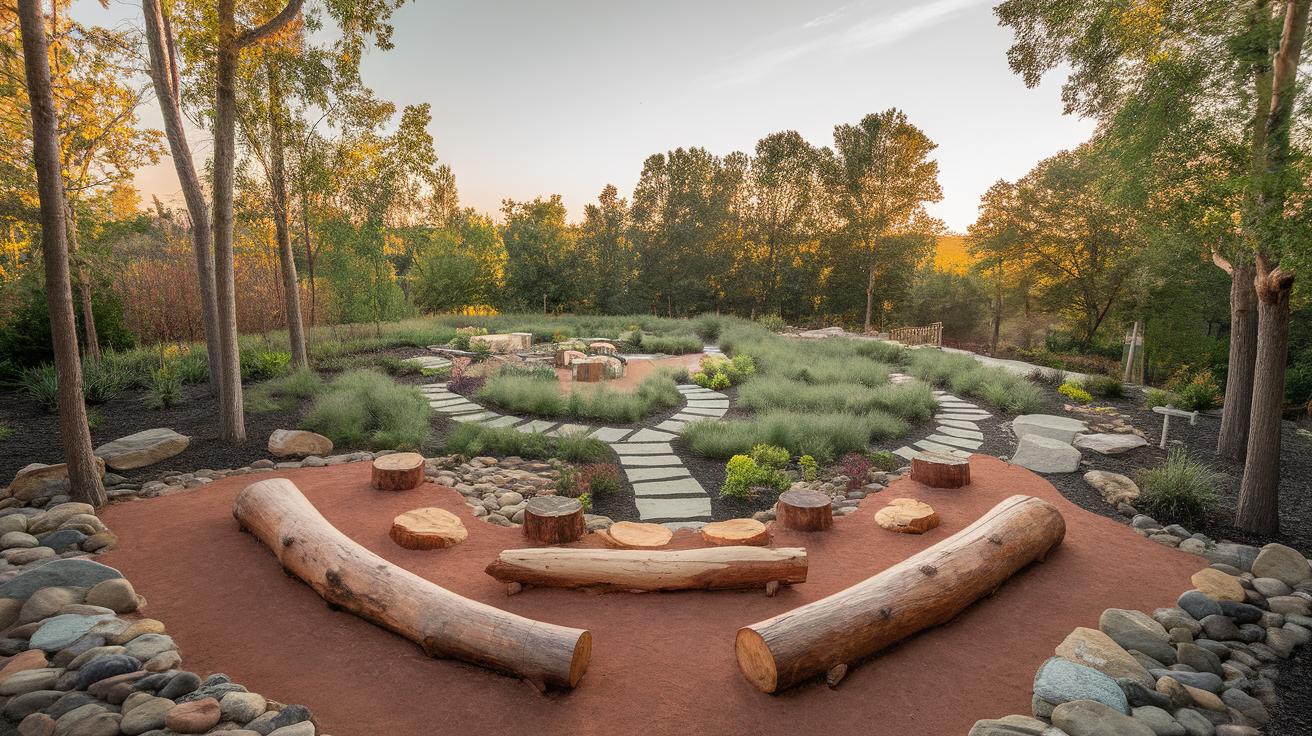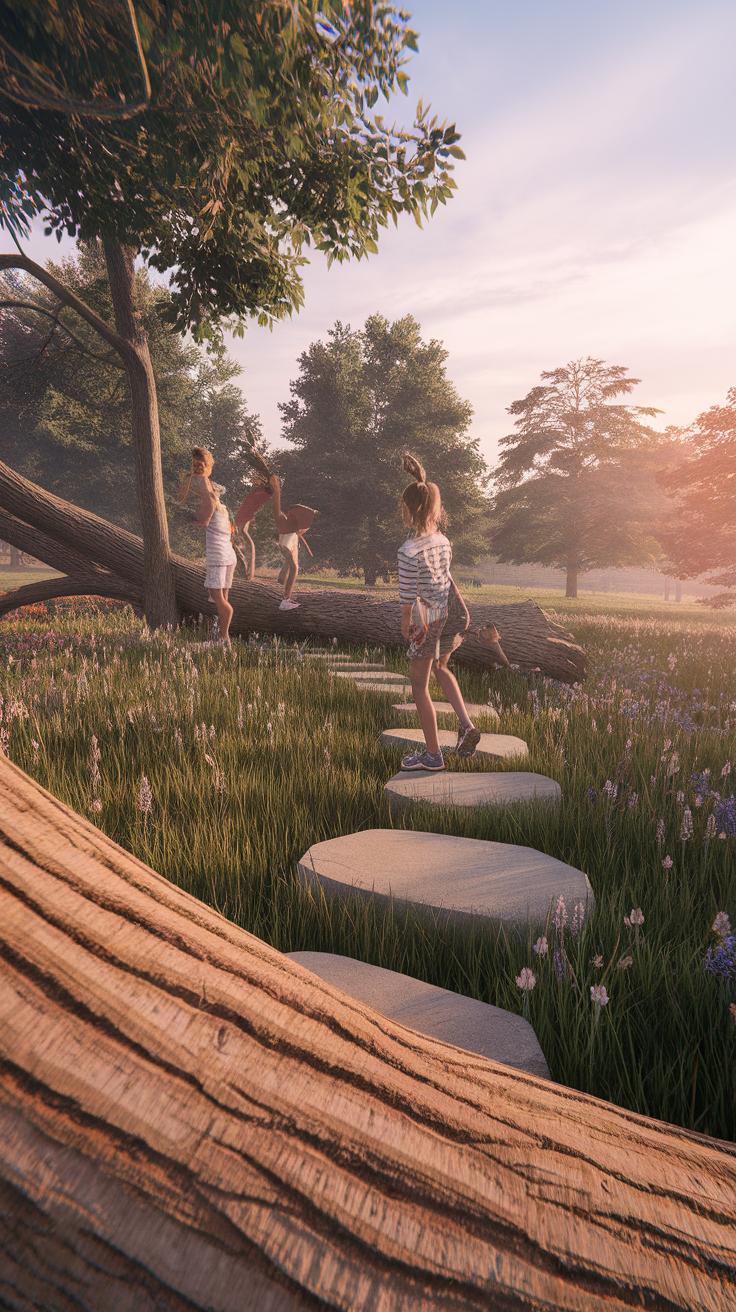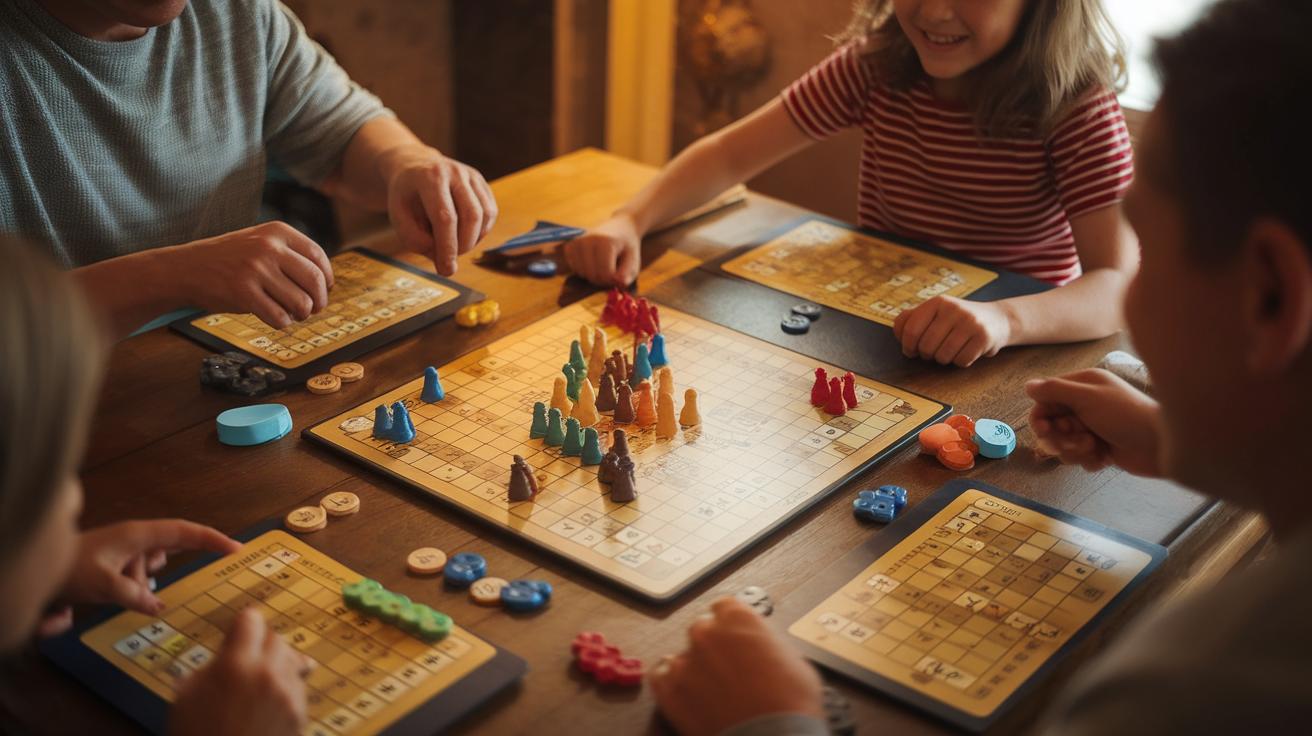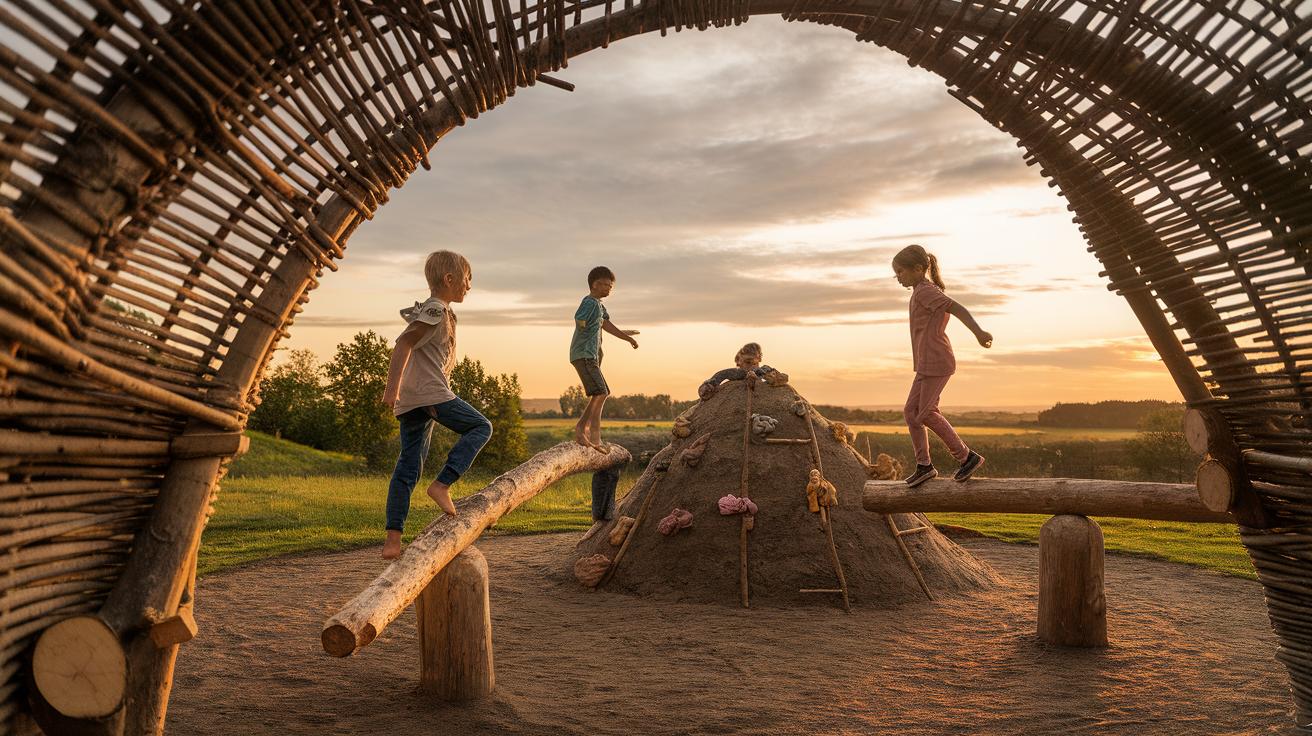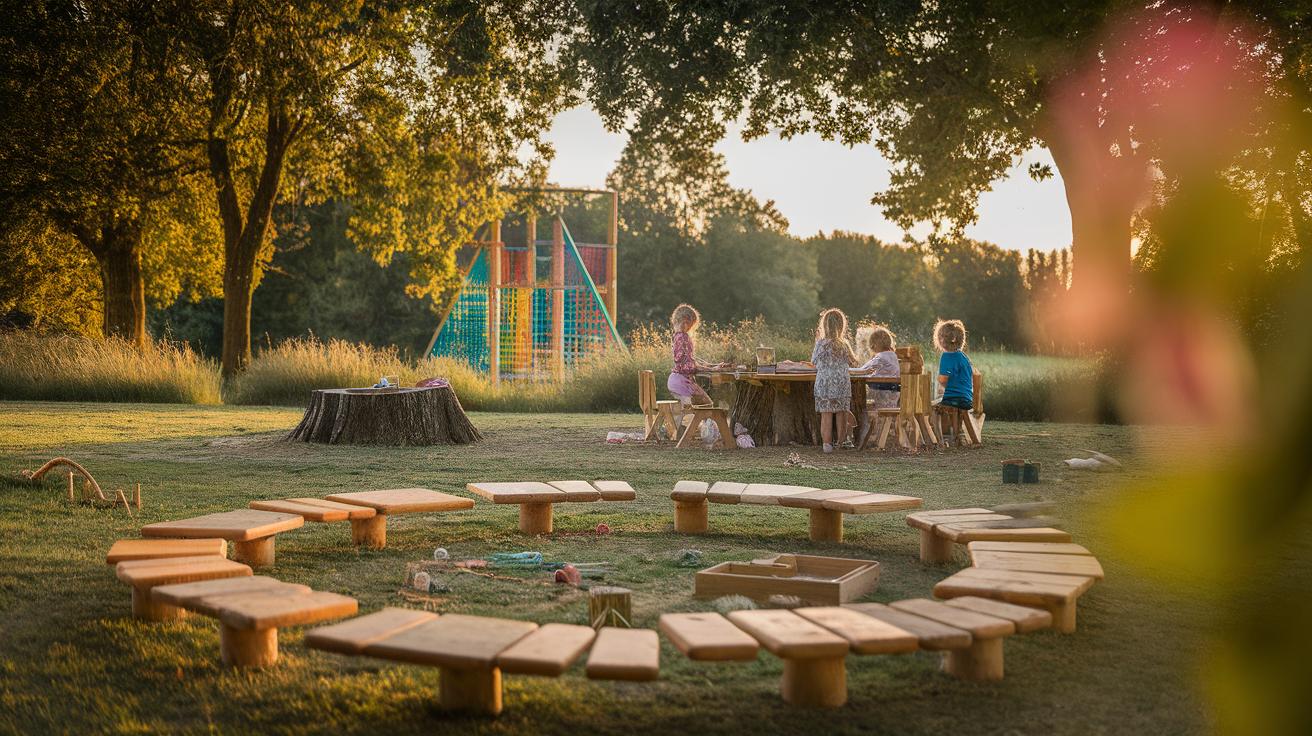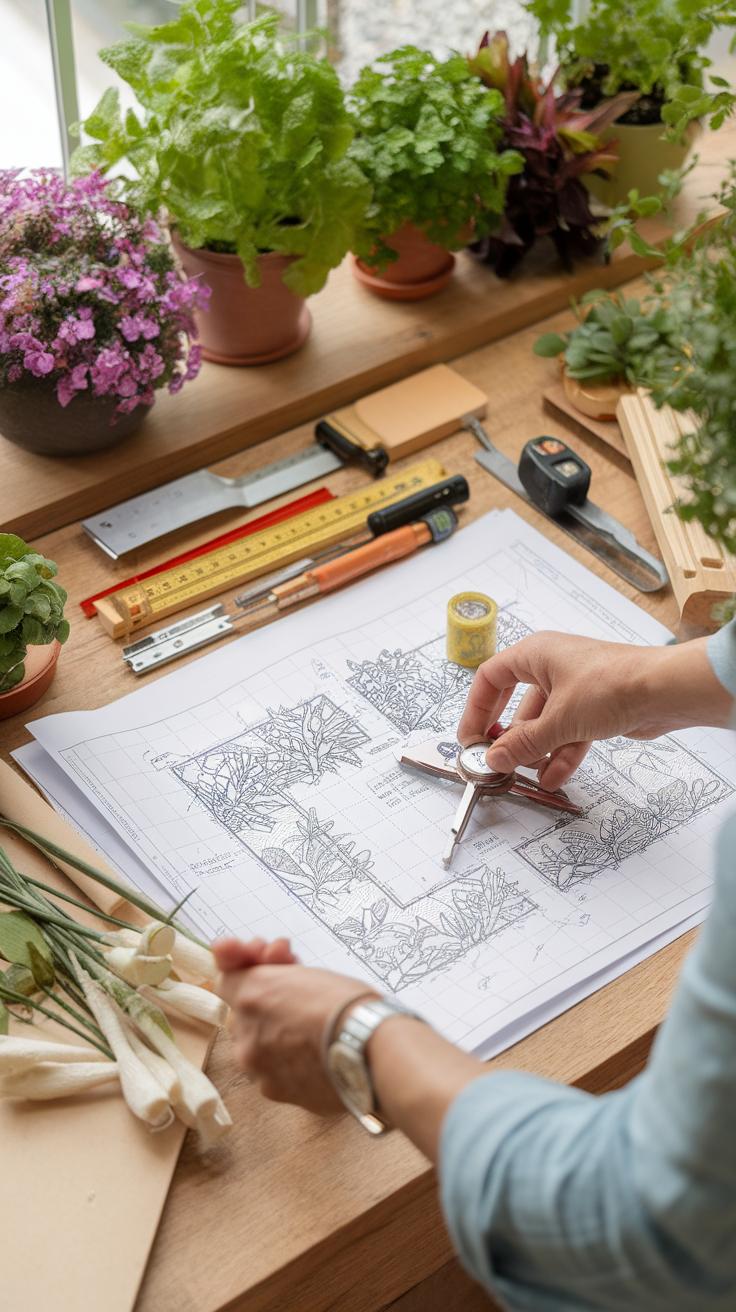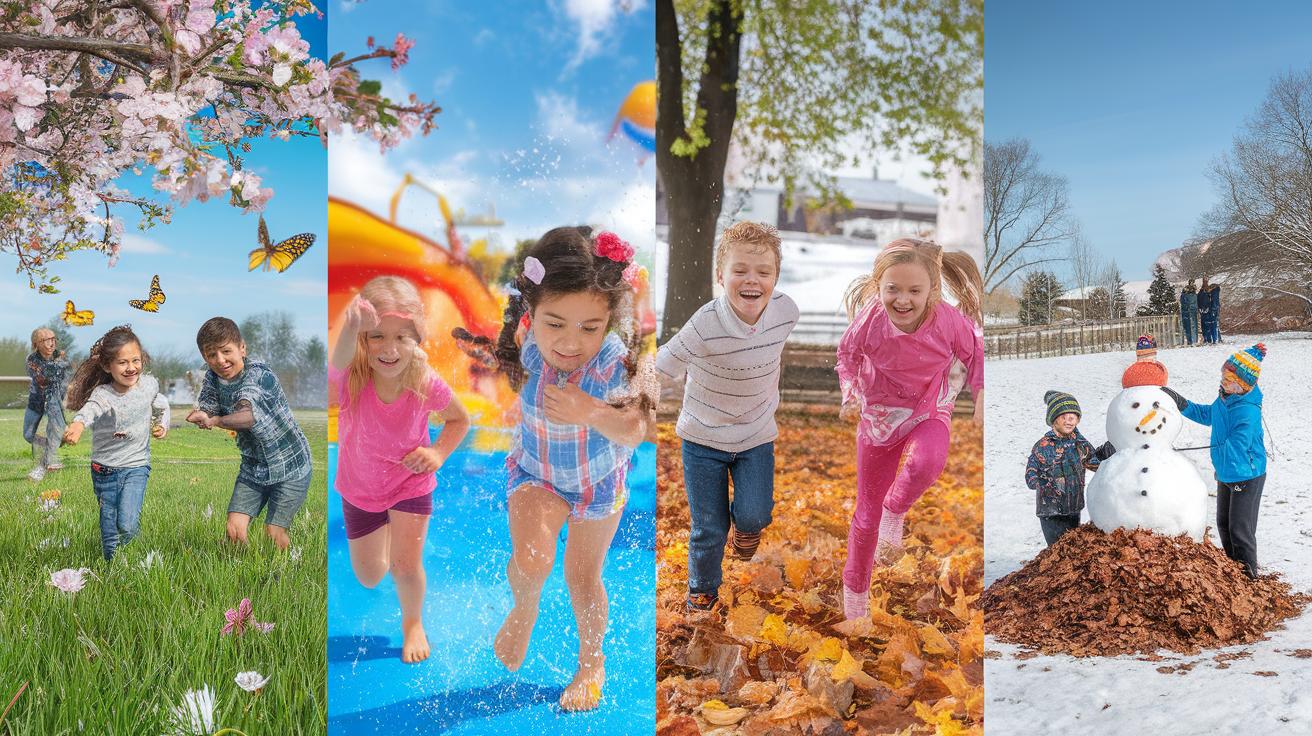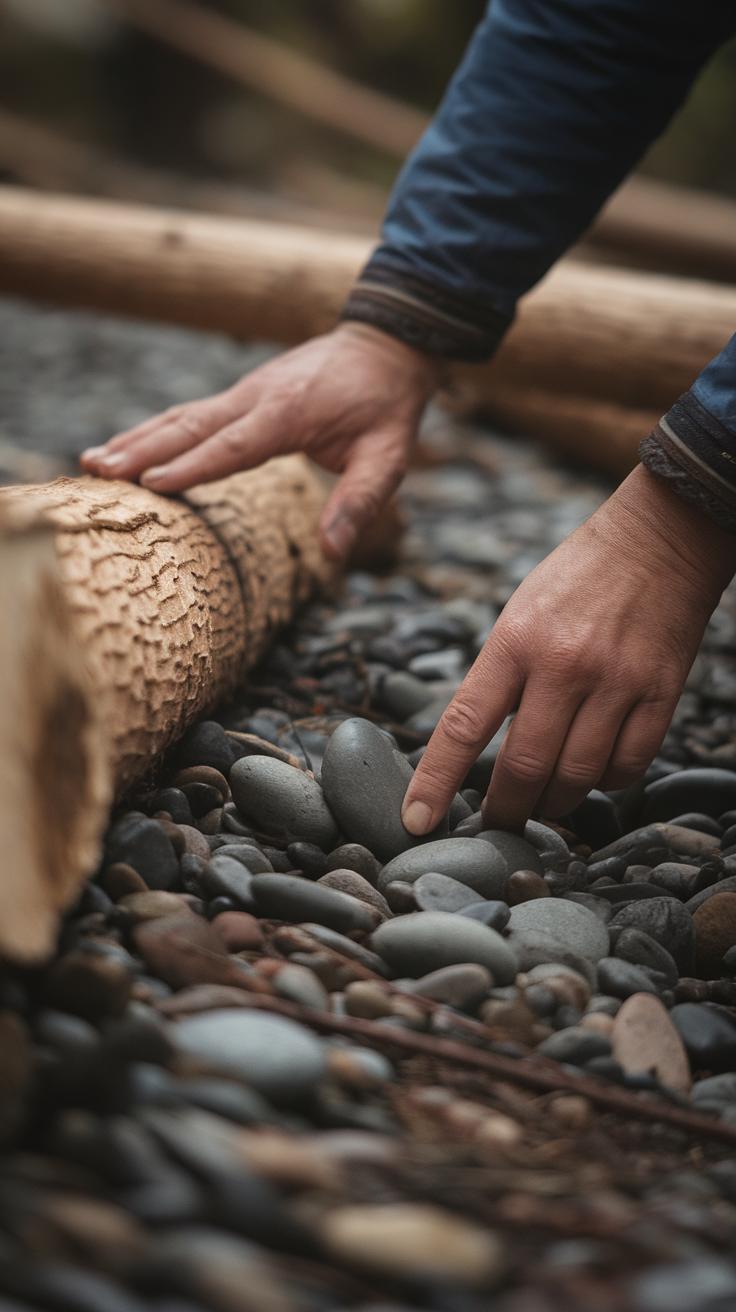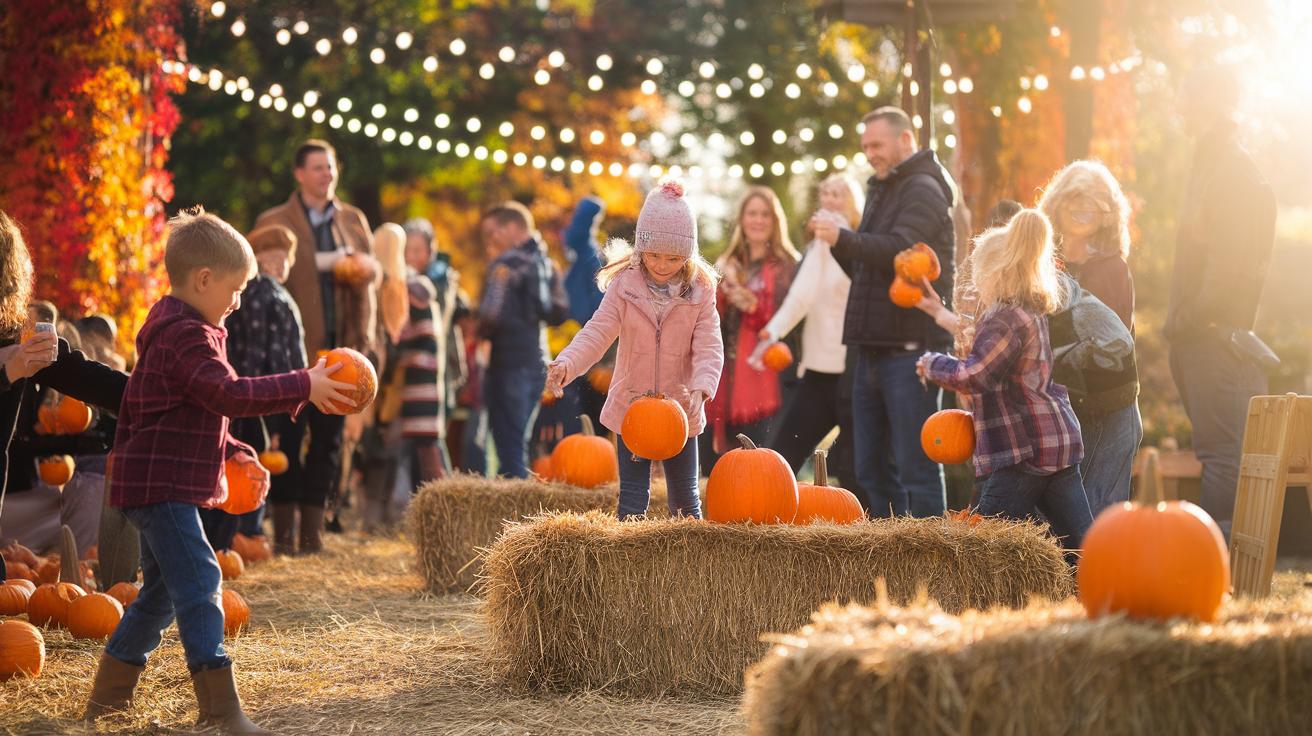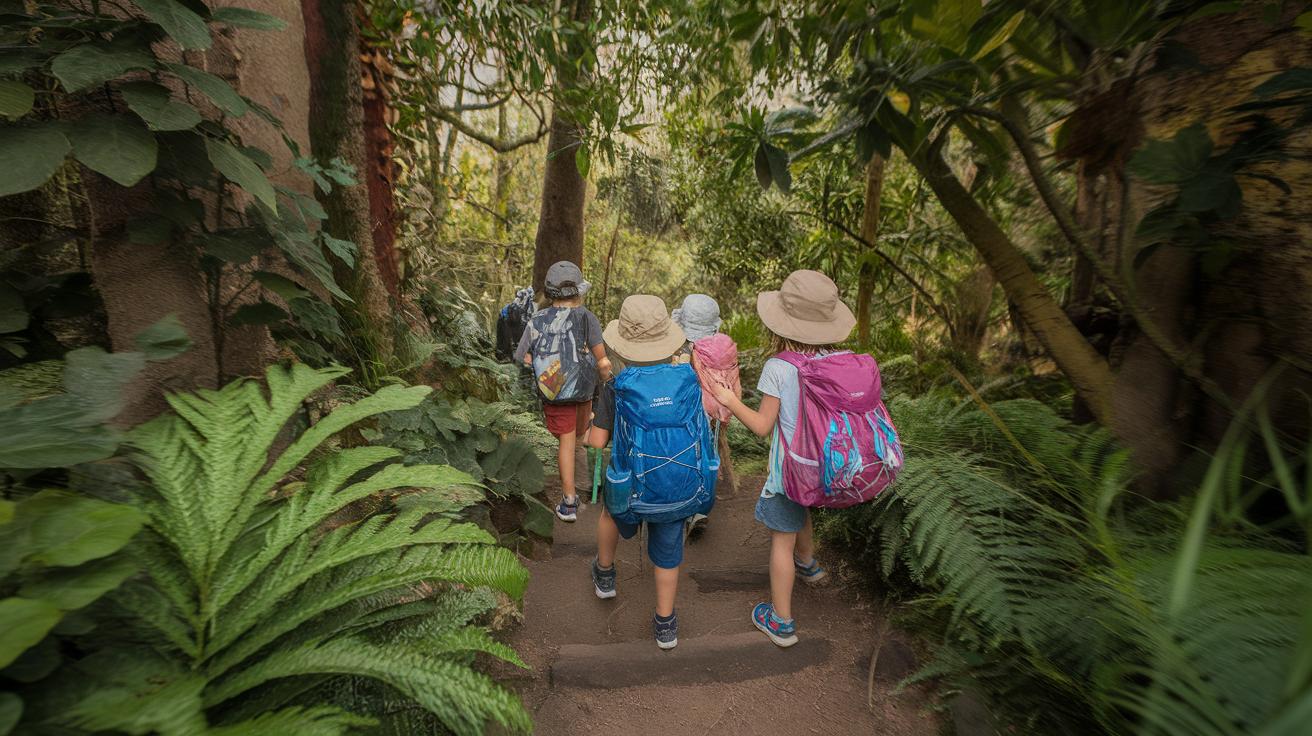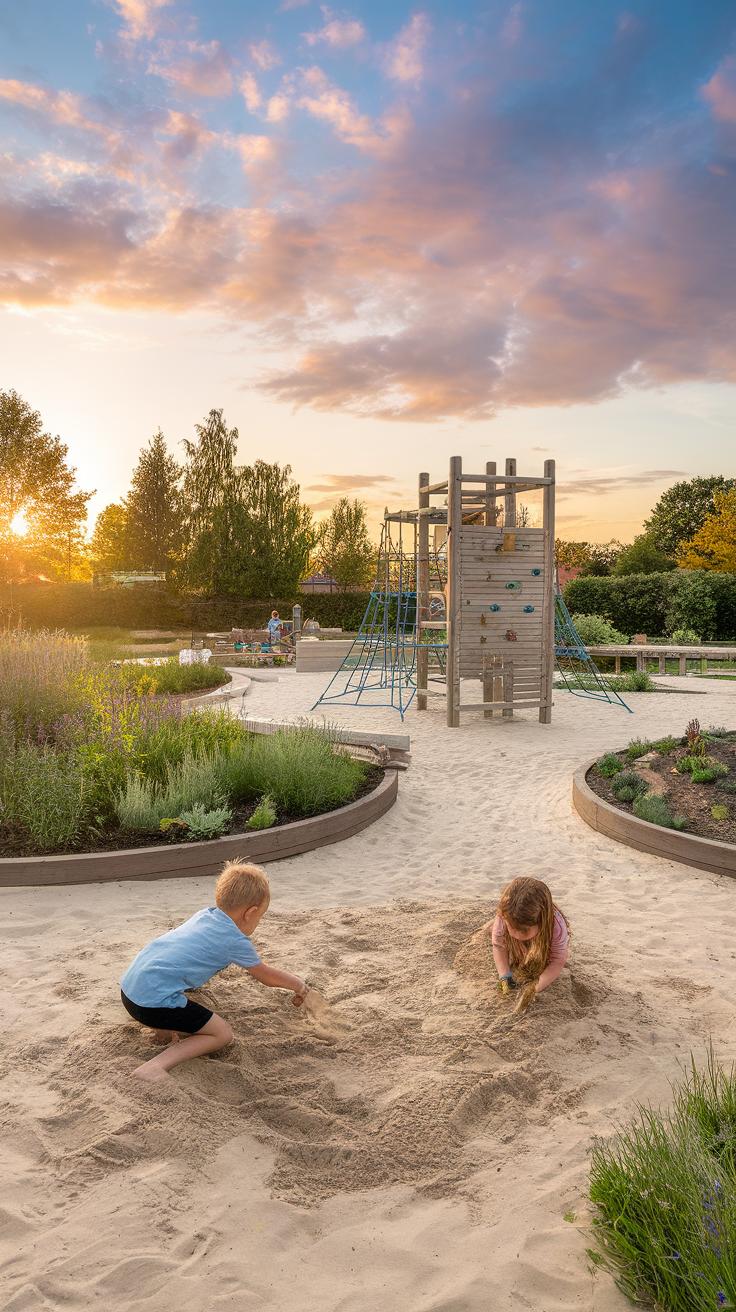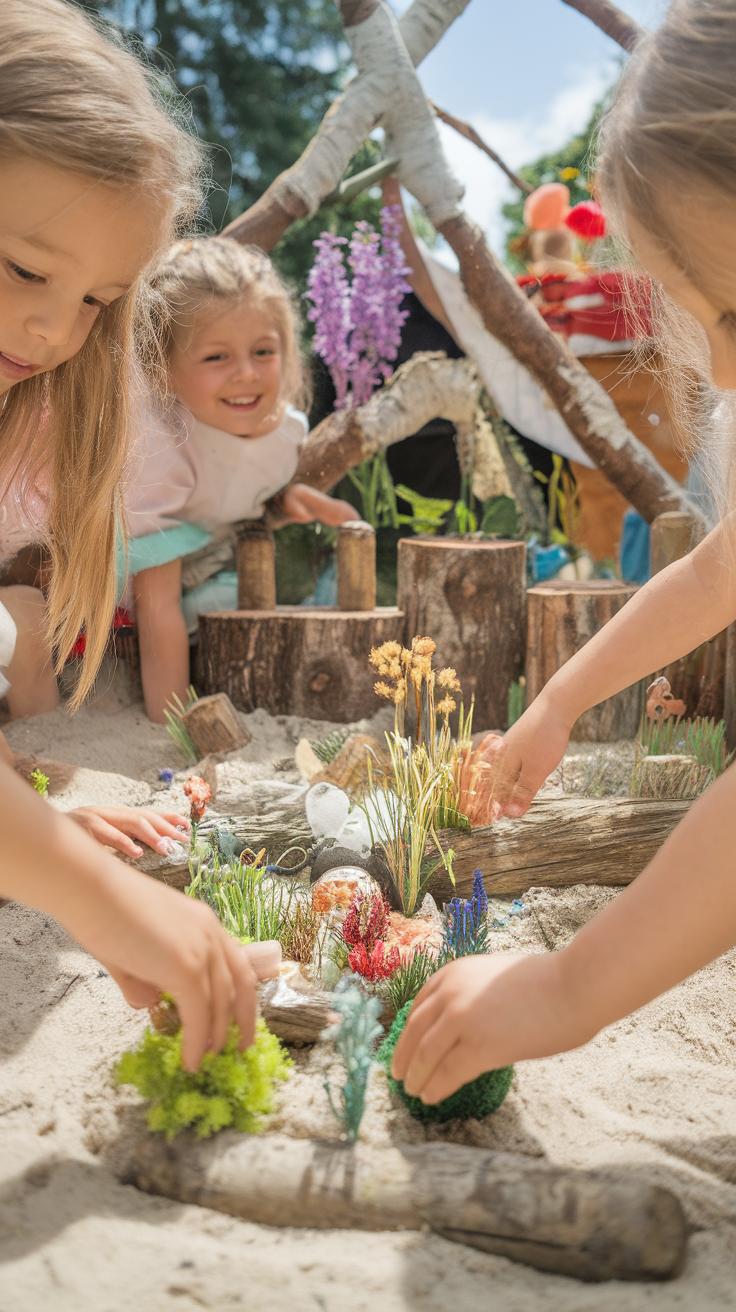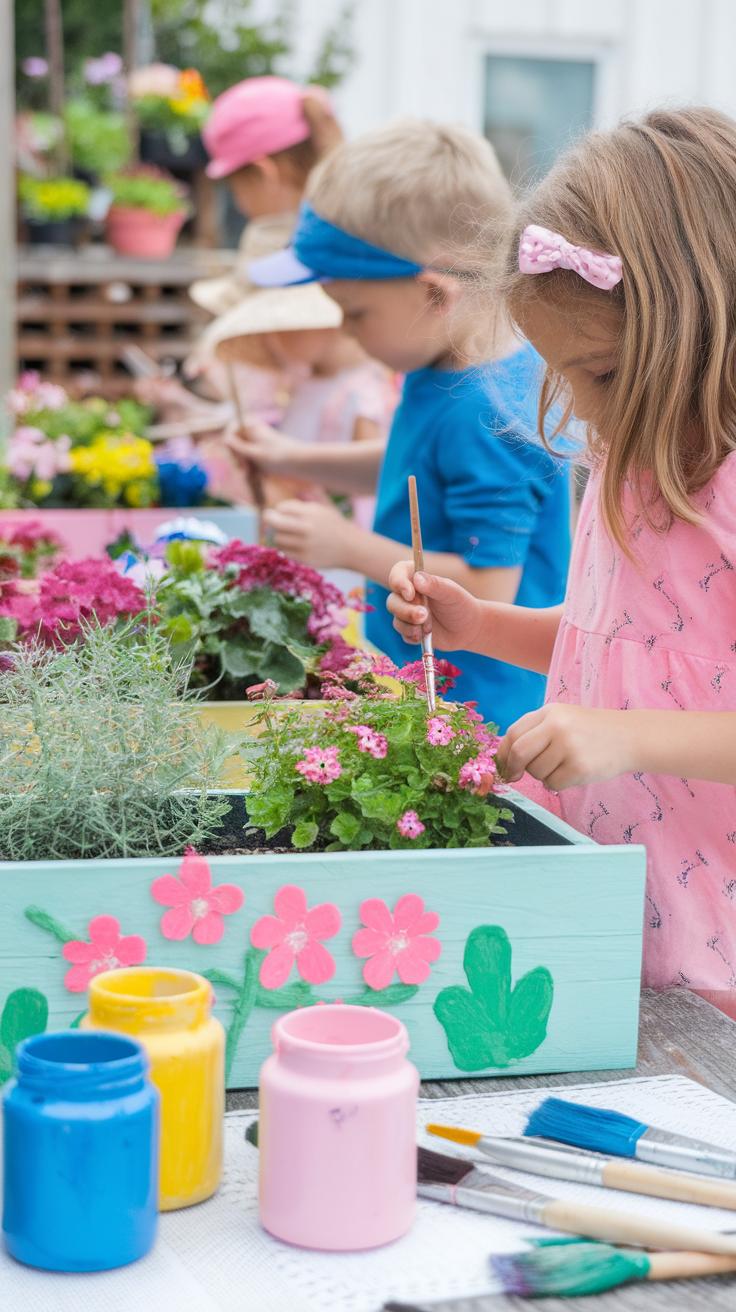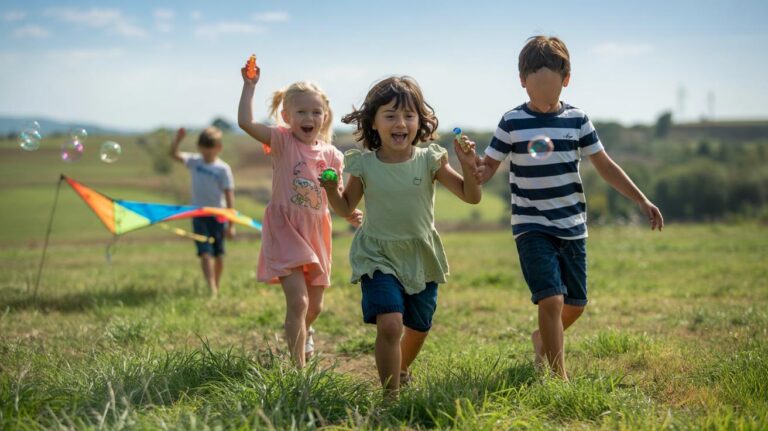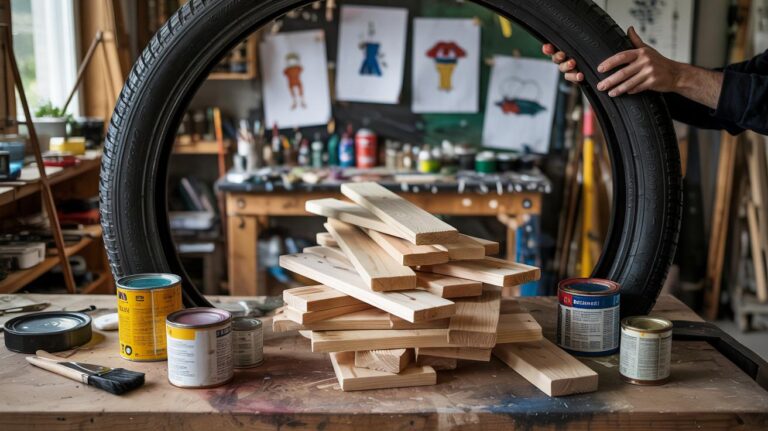Introduction
Natural outdoor playgrounds are play areas designed to integrate natural elements and materials, offering children a unique environment to engage with nature while playing. Unlike traditional playgrounds that often use manufactured equipment, natural playgrounds use rocks, trees, wood, water, and plants to encourage physical, social, and emotional development. These playgrounds help children explore their creativity and improve their motor skills. You will find that natural playgrounds offer a different experience that children may find more inviting and stimulating. You may want to consider how incorporating natural features could make playtime more meaningful for your kids.
Creating a natural outdoor playground in your garden requires planning and understanding of the needs of children and the layout of your outdoor space. You can design an area that is both safe and fun, encouraging exploration and imaginative play. This type of playground suits various ages and abilities, making it a flexible space for family and friends to enjoy. You might wonder how to start the process and what features to include. This article will guide you through practical steps and ideas that help you design and build a natural playground in your garden.
Understanding Natural Playgrounds
Natural playgrounds use elements you find in nature instead of plastic or metal structures. They include things like logs, stones, water, plants, and dirt. These spaces invite children to climb, dig, balance, and explore in a less structured way than traditional playgrounds, which rely on swings, slides, and fixed equipment.
Designing a natural playground in your garden creates a setting where kids can use their imagination freely. It encourages physical activity by challenging balance and coordination. Social skills develop as children work together to build forts or create games. Emotional growth happens when children connect with their surroundings and gain confidence in trying new activities.
Using natural materials also helps children learn about the environment. They handle wood, water, and soil, which brings a sensory experience missing from artificial play areas. This kind of play promotes curiosity, problem-solving, and respect for nature.
Benefits of Natural Playgrounds
Natural playgrounds boost creativity because they don’t have fixed rules. Children invent how to use logs or stones as part of games or building. This type of play sparks imagination more than traditional playgrounds where the activities are usually the same each time.
Physical skills improve as kids balance on uneven surfaces, climb trees, or navigate water features. Fine motor skills grow when children gather twigs or stack rocks. These activities challenge both strength and coordination in natural ways.
Natural textures, sounds, and smells provide rich sensory learning. Kids touch rough bark, hear flowing water, and smell fresh plants. These experiences deepen their connection to the environment and make outdoor play more engaging.
Social interactions happen naturally. Children often team up to solve problems, share tools, or create stories. This cooperative play builds communication and teamwork skills. When you watch children play freely outdoors, you see how natural elements encourage group creativity and friendship.
Elements of a Natural Playground
Logs make great climbing frames and balance beams. Their rough surfaces help develop grip and coordination. Stones can form stepping paths or small walls for kids to navigate, improving balance and agility.
Water features such as small streams or a mud kitchen let children experiment with pouring, mixing, and floating. These support fine motor skills and introduce basic science concepts.
Plants add color, texture, and scent. Friendly shrubs and flowers attract butterflies and birds, inviting observation and care. Gardening areas can teach responsibility and patience.
Uneven terrain like small hills, dips, and natural slopes encourages children to adjust their movements. This builds leg muscles and balance in ways flat playgrounds cannot.
Including natural materials creates a variety of challenges that engage kids physically and mentally. Think about how your garden’s unique features can become parts of this natural play environment that grows with your child’s abilities.
Planning Your Garden Space
Start by measuring your garden to know exactly how much space you have for the playground. Think about the size of your children and how many will use the space. Flat areas work best for many play features, but gentle slopes can add interest if used carefully.
Notice where sunlight falls throughout the day. Areas with morning sun but afternoon shade help keep children comfortable during play. Avoid spots that stay wet from poor drainage, as these can become slippery or muddy.
Check if you have easy access paths from your house to the playground. Children should be able to move safely between indoors and the play area without obstacles. Watch for spots where water pools or drains slowly, since these might need fixing before play equipment is placed.
Look around for natural elements like trees, rocks, or small hills. Ask yourself: Can a fallen log become a balance beam? Could a boulder be a climbing spot? Use these existing features to shape your playground. Including what is already there helps you create a fun and natural space without extra effort.
Evaluating Space and Safety
Check the garden for hazards such as sharp stones, thorny bushes, or exposed roots. These can cause injuries during play. Mark off any unsafe areas to avoid or fix them before adding play zones.
Divide the space into sections for different types of activities. A quiet zone for imaginative play might sit away from active areas like climbing or running. Design a soft fall zone around swings or slides, using mulch or sand to reduce impact.
Keep clear sightlines from the house so you can watch children easily. Avoid placing play equipment near fences with gaps or near busy roads. Use barriers like low hedges to separate the playground from unsafe zones.
Ask yourself: Where will children run, climb, and rest? Plan zones that suit these movements while minimizing risks. A safe layout supports fun and lets kids explore without constant supervision.
Integrating Existing Natural Features
Incorporate trees by turning them into climbing posts or shaded areas for rest. Use low branches as natural monkey bars or hanging points for swings. Make sure the tree species is safe and sturdy enough for play.
Rocks can create natural climbing spots, stepping stones, or seating areas. Arrange smaller stones into paths or balance beams. Check that rocks are stable and won’t tip over when children interact with them.
Slopes add variety and help build physical skills. Use gentle inclines for slides or rolling activities. Steeper sections can be softened with shrubs or mulch to prevent slipping.
Observe how these features connect. Could a trail link a hilltop with a forest corner? Use what you have to create a playground that feels part of the garden, not an add-on. This approach brings nature closer to your children’s daily play.
Choosing Natural Materials
Choosing the right materials shapes how safe and inviting your natural playground will be. Focus on materials that last outdoors without harmful chemicals and keep children safe.
Wood works well because it feels warm and natural. Select untreated wood from trees like cedar or redwood, which resist rot and bugs while avoiding toxic finishes. Make sure all edges are smooth to prevent splinters.
Stone also plays a useful role in your playground. Rounded river stones make good seats or stepping elements because they lack sharp edges and can weather the weather well.
Think about sustainability. Using reclaimed wood or stones from your yard reduces waste and environmental impact. Avoid plastics or treated lumber that can release toxins over time.
How will the materials cope with rain, sun, or rough play? Prioritize those that grow better with time to offer a safe, lasting space.
Wood and Stone Choices
Wood is a classic natural building material. Choose wood like cedar, redwood, or white oak. These options resist decay and insects naturally without chemicals. Pine and fir often need treatment, which can add toxins.
All wooden surfaces should be sanded and rounded to protect children from splinters and sharp corners. Avoid metal fasteners that can rust or get hot in the sun; opt for stainless steel or brass instead.
Stones add variety for sitting or climbing. Smooth, rounded river stones create safe, tactile surfaces that feel good to touch and are less likely to cause injury. Arrange stones in circles or stepping paths to encourage physical play.
Gather stones locally if you can to keep your design eco-friendly. Ask yourself: can these materials stand daily play and weather for years without becoming unsafe?
Plants and Vegetation
Plants enrich your playground by adding colors, smells, and textures for curious hands and noses. Pick varieties that are safe for children and free of sharp thorns or toxic parts.
Lavender, rosemary, and mint offer pleasant scents and are easy to grow. Grasses and soft-leafed herbs provide gentle textures to explore. Avoid plants like holly or oleander that can harm kids if touched or ingested.
Fruit-bearing plants like blueberries or strawberries can add an extra treat, but make sure you watch for allergies and clean fruit regularly. Trees with low branches, such as maples or crabapples, work well for climbing and shade.
Consider seasonal changes too. Will your plants offer interest year-round? How will you protect young kids from parts that may cause irritation? Your choice of vegetation can turn playtime into a rich sensory experience without risking safety.
Designing Play Features and Zones
Creating distinct play zones helps children enjoy a variety of activities that boost their physical, social, and imaginative skills. Begin by mapping out spaces for different types of play, such as climbing areas, sand pits, water stations, and quiet corners. This approach invites kids to choose what suits their mood or energy.
Climbing areas made from logs or large stones challenge strength and balance. Sand pits offer tactile fun and social mixing. Water play stations encourage exploration and teamwork, while quiet zones with soft ground and plants provide calm spaces for reflection or small group play.
How can your garden encourage children to move between different types of play? Think about sight lines that let you supervise while children switch zones safely. Mixing active and calm spaces keeps play dynamic and well-rounded. Each zone should have clear boundaries, creating a sense of order while inviting curiosity.
Active Play Areas
Use natural materials like sturdy logs or wooden planks to build climbing structures and balance beams. These elements develop coordination and strength. Position slides carved from smooth timber or incorporate gentle slopes from grassy mounds. These offer easy, nature-based physical challenges.
Vary the heights and difficulty so children of different ages and skill levels stay engaged. Encourage you to test the structures yourself for stability and fun. Adding stepping stones or uneven paths can enhance motor skills while inviting exploration.
Ask yourself: Do these features invite kids to climb, balance, jump, and slide safely? Natural textures give hands and feet more to grip, improving confidence. The more your designs challenge physical skills, the better they support healthy growth and lasting play habits.
Creative and Quiet Spots
Build spaces where children can unwrap their imaginations or relax. Small tables or tree stumps can hold natural art supplies like leaves, sticks, stones, and pinecones. These materials inspire crafts and story-building while connecting kids to their environment.
Design a sensory garden with fragrant herbs, soft moss, or smooth river rocks. These elements soothe and engage the senses. Seating areas nestled among plants offer quiet corners for reading, chatting, or simply watching nature.
What natural items in your garden could spark creativity or calmness? These spots balance energetic play and help children regulate emotions. Offering varied environments invites different styles of play, strengthening cognitive and social skills overall.
Ensuring Safety and Accessibility
Creating a natural playground means balancing fun with safety. You want children to explore freely, but risks must be managed carefully. Think about how surfaces cushion falls. Materials like wood mulch, sand, or grass reduce injury chances while fitting naturally into your garden space. Avoid hard surfaces near climbing or jumping areas. Check these surfaces regularly for wear and compaction.
Keep play areas clearly visible from different angles. This helps adults supervise easily and keeps children within safe boundaries. Trim plants that block sight lines or build low fences to mark play zones without isolating kids from the rest of the garden.
Maintenance is a daily habit. Removing broken branches, checking for sharp edges on natural structures, and ensuring drainage prevents slippery mud build-up. Regular upkeep stops little hazards from becoming serious problems.
Consider who will use the playground. Can all children access paths and play features? Are there ramps or wider spaces for wheelchairs? Can sensory-rich elements help children with autism or sensory processing differences engage safely? Designing for all abilities makes your playground a place where every child can join in and feel welcome. How will you make sure every child can enjoy your natural play space?
Safe Surfacing and Structures
Choosing the right surfacing material keeps children safe during play. Wood mulch absorbs impact well and looks natural in gardens. Grass feels soft and brightens the play area but wears down quickly under heavy use. Sand allows digging and sensory play but requires frequent raking and cleaning.
Build structures from sturdy, untreated wood or stone. Avoid sharp edges or loose parts that might cause injury. Anchor climbing logs or balance beams firmly in the ground to prevent tipping. Use natural ropes or sturdy branches trimmed smooth for climbing or swinging.
Test each feature for stability before letting children play. Think about how moisture affects surfaces—wet mulch can compact and lose cushioning over time. Having a mix of surfaces can provide variety and safety benefits in different spots. Could you create a safe path with stepping stones over soft mulch for balance practice?
Inclusive Design Principles
Design your playground so children with different abilities can play alongside their friends. Wide, smooth paths make it easier for wheelchairs or walkers to move around. Gentle ramps help reach raised platforms without stairs. Sensory-rich areas with textured plants, water features, and natural sounds stimulate children with sensory differences.
Incorporate low, reachable elements where children with limited mobility can participate. For example, sand tables at wheelchair height or accessible water play stations. Consider seating spots with shade for kids who might need breaks.
Think about how children communicate and interact. Use signs with pictures, easy-to-understand instructions, or tactile markers for kids who are nonverbal or visually impaired. When planning, ask yourself: Does every child in your family or community get to join the fun? Small changes make a big difference in how inclusive your playground feels.
Encouraging Social Interaction and Learning
Arrange your play features to invite children to play together. A circle of seating helps kids gather and communicate face to face. It offers a natural spot for storytelling, group games, or quiet moments discussing their discoveries. Think about shared elements like water or sand tables where children can build, pour, and create as a team.
Cooperative games foster teamwork and problem-solving. Providing loose parts like sticks, stones, or natural blocks encourages children to combine ideas and collaborate on projects. This kind of group play builds social skills and turns your garden into a space of shared adventure and learning.
Play Areas for Groups
Design seating in a circle to support eye contact and conversation among kids. This layout feels inclusive and invites everyone to join in. Include a sand or water feature that serves multiple children at once to encourage cooperation over these sensory activities.
Choose games that need teamwork, like balance challenges or nature scavenger hunts. These activities promote communication and collective problem solving, helping children understand how to listen and support each other.
Nature Education Opportunities
Integrate educational elements that bring wildlife closer to children’s daily play. Bird feeders can attract local species, inviting observation and questions about their habits. Insect hotels offer a safe home for bugs and teach kids about the tiny creatures vital to the environment.
Label plants clearly to show their names and functions. You might include herbs, flowers, or trees that change with the seasons. This kind of labeling allows children to connect words with living things, encouraging curiosity and respect for nature. What will your children learn first from your natural playground?
Maintaining Your Natural Outdoor Playground
Regular upkeep keeps your natural playground safe and enjoyable for children. Inspect each play element at least once a week to check for loose parts, splinters, or cracks. Look closely at wooden structures for signs of rot or insect damage. Remove debris like broken branches, sharp stones, or fallen leaves that could cause trips or injuries. Fix wobbly platforms or loose nails immediately to prevent accidents. When you find hazards, you can act before children get hurt.
Seasonal changes affect both safety and the health of plants in your playground. As leaves fall, clear them often to avoid slippery surfaces. Snow and frost may weaken branches or make surfaces uneven. Preparing play areas for winter by trimming fragile plants protects your garden features. When spring comes, reassess all elements to adapt your maintenance accordingly. How does your playground respond to the shifts in weather?
Routine Safety Checks
Check ropes, swings, and climbing frames for wear and tear that could cause failure during play. Tighten screws and bolts regularly to keep equipment steady. Verify that play surfaces stay level and free from dangerous holes or compacted soil. Remove sharp objects and anything toxic that might have blown into your garden. Testing the strength of tree branches and wooden logs before kids climb them helps keep risk low. Ask yourself if every part remains strong and secure for safe use.
Caring for Plants and Features
Water plants early in the morning or late in the afternoon to reduce evaporation and ensure moisture reaches roots. Prune trees and bushes to keep pathways clear and encourage healthy growth. Replace dead or damaged plants promptly to maintain an inviting space. Mulch around plants to preserve soil moisture and limit weeds. Check that natural building materials, like logs or bark, stay in good shape and swap out anything rotting. How often do you observe your garden’s needs throughout the year?
Involving Children in the Design and Care
Children who help shape their play area feel more excited and connected to it. When you include them in planning and maintaining the playground, they learn valuable skills and take pride in their work. This makes the space feel personal and encourages them to respect it.
You can ask your children what games they enjoy or what they imagine in a perfect play zone. Show them pictures of natural playgrounds to spark their ideas. Involve them in picking materials like stones, logs, or plants. When children see their suggestions used, they feel empowered.
Assign simple tasks such as watering plants, clearing leaves, or checking for loose branches. These chores teach care and responsibility. Create easy-to-follow rules for safe play that your children help write. This way, they understand the reasons behind each rule and hold themselves accountable.
How might your child’s input change the way your playground looks and works? What small duties would they enjoy doing every week? Including children in design and care builds a stronger, safer, and more enjoyable natural play space.
Gathering Children’s Input
Start by asking kids to draw their dream playground. Drawing helps them express ideas they might not say aloud. Talk about favorite activities like climbing, jumping, or hide and seek. Which natural features do they like—trees for climbing, rocks for balancing, or logs for jumping?
Visit natural playgrounds or parks nearby. Let children explore and observe what they enjoy most. Discuss what makes those spaces fun and safe. Bringing photos or sketches back home can inspire your own design.
Use simple conversations and questions to guide them. What colors, shapes, or textures do they want? Which natural elements feel most inviting? Write down their answers and keep sharing ideas during the building process to keep them engaged.
Teaching Responsibility
Children can help maintain the playground by watering plants regularly. Raking leaves, picking up sticks, or brushing dirt off rocks can be fun tasks to rotate each week. These chores teach that their actions affect the health and safety of the space.
Set clear, easy-to-understand rules for using the playground safely. For example, no throwing sticks and always watching out for others. Involve children in making these rules so they take ownership.
Explain why rules matter and what can happen if they aren’t followed. Encourage children to remind each other kindly and ask for your help when needed. Responsibility grows when children see their effort make a difference in keeping the play area clean and safe.
Conclusions
Designing a natural outdoor playground is an excellent way to provide children with a safe and enriching environment that connects them with nature. Using natural materials and elements allows for creative and physical development. You have the opportunity to transform your garden into a space that invites children to discover and learn through play. Consider how each part of your design meets your child’s needs and safety requirements. Be mindful in choosing plants, materials, and features that stimulate multiple senses and encourage active play.
Once your natural outdoor playground is built, observe how children interact with the space to see what works well and what may need adjusting. The environment you create plays a role in shaping their experiences and learning. You have the power to craft a playground that supports healthy growth and happy memories. Keep in mind that natural playgrounds can evolve over time, so stay open to changes and additions that enhance the play experience and accommodate your children’s growth.

